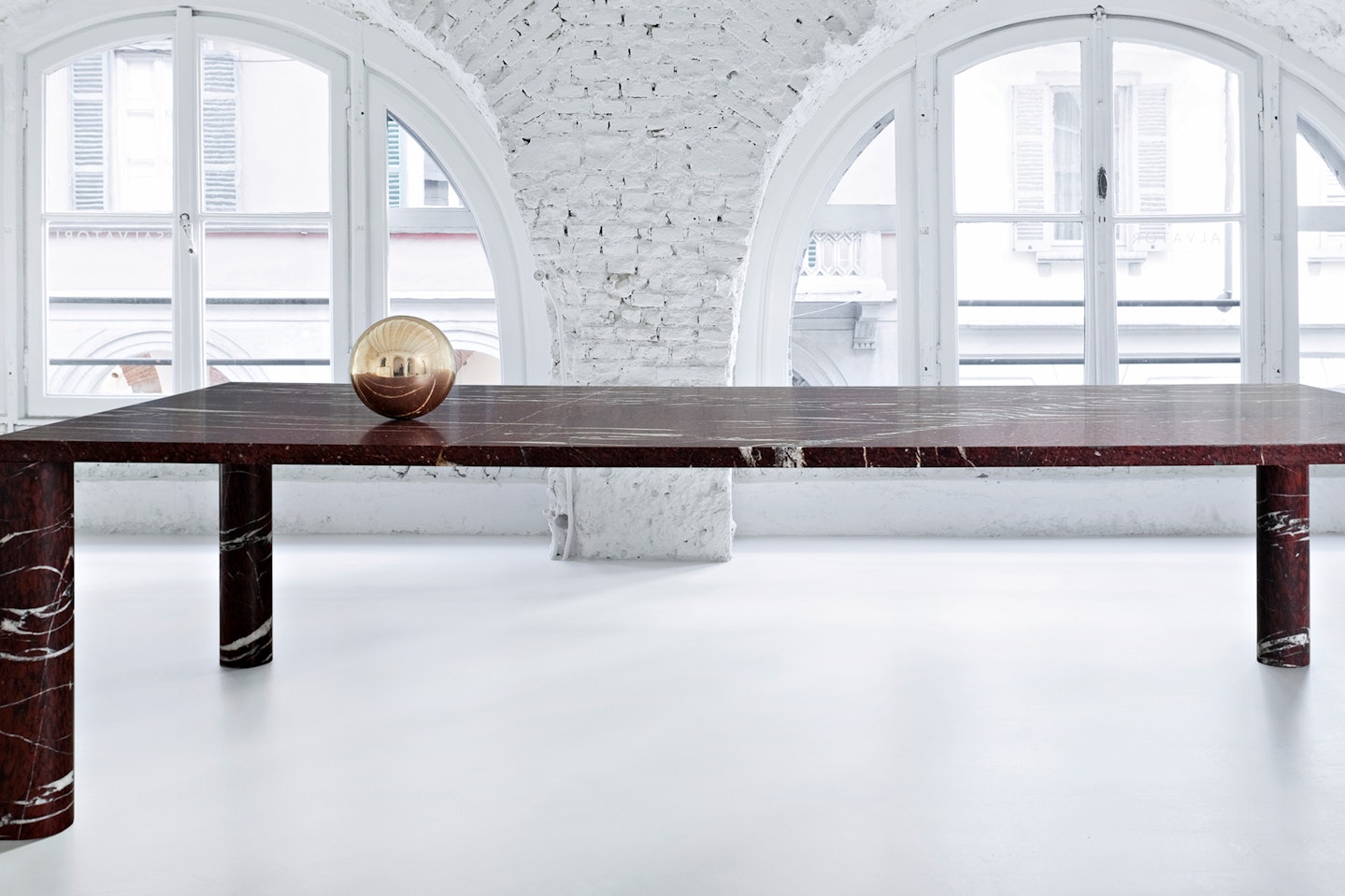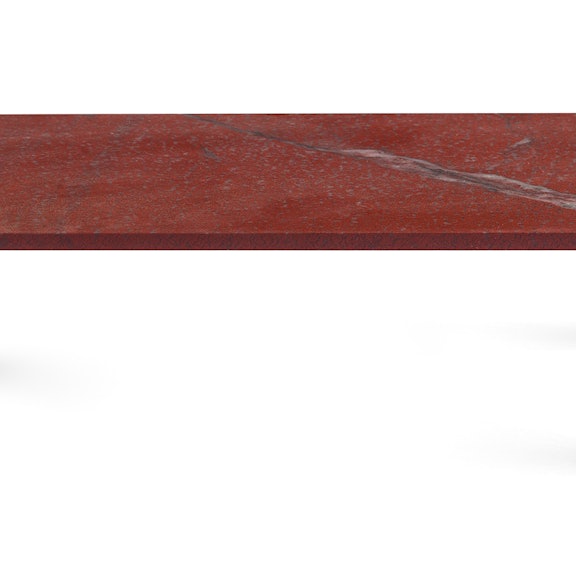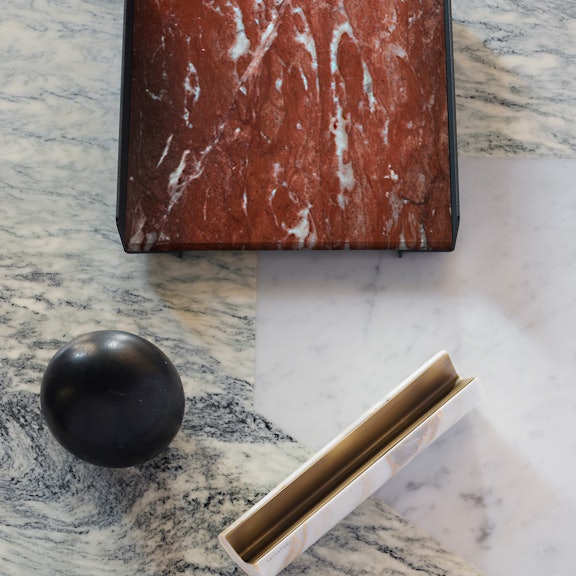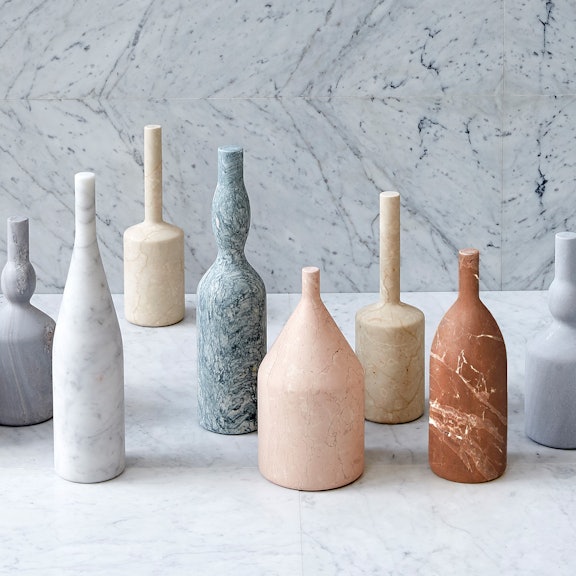Colour in Focus: Red Marble
03.2022
“The Lost Stones Collection gives new life to fragments of precious stone, joining them by following the randomness of its shatter”, explains Lissoni of the project“
It was an Italian in France who first came across the brilliant red marble quarries of the Languedoc region in 1615.
The sculptor Stefano Sormano, born in Rome, had been tasked with searching out new reserves of stone by the Abbot Jean d’Alibert, who presided over the Abbey of Caunes that owned the land. The quarries he found, set amongst the ochre-coloured hills of the area, were in use since the Roman times but had been abandoned for years.
Described in the eighth century by Benedictine monk and intellectual Raban Maur as a material comprised of “foam and mixed blood”, once the deep ruby hues of the French marble were rediscovered it quickly came back into vogue. The stone was used frequently to fashion fireplaces and furniture in 18th century France under Louis XIV, who was enamoured with its lustrous shade. Palaces like the Grand Trianon of Versailles, built for Marie Antoinette, includes several fireplaces sculpted from the highly prized marble, as well as a number of columns decorating the majestic palace’s facade. The interior of St. Peter’s Basilica, completed in 1626, is also lined with the deep terracotta tone, found amongst the Baroque decoration within the sacred church’s nave.
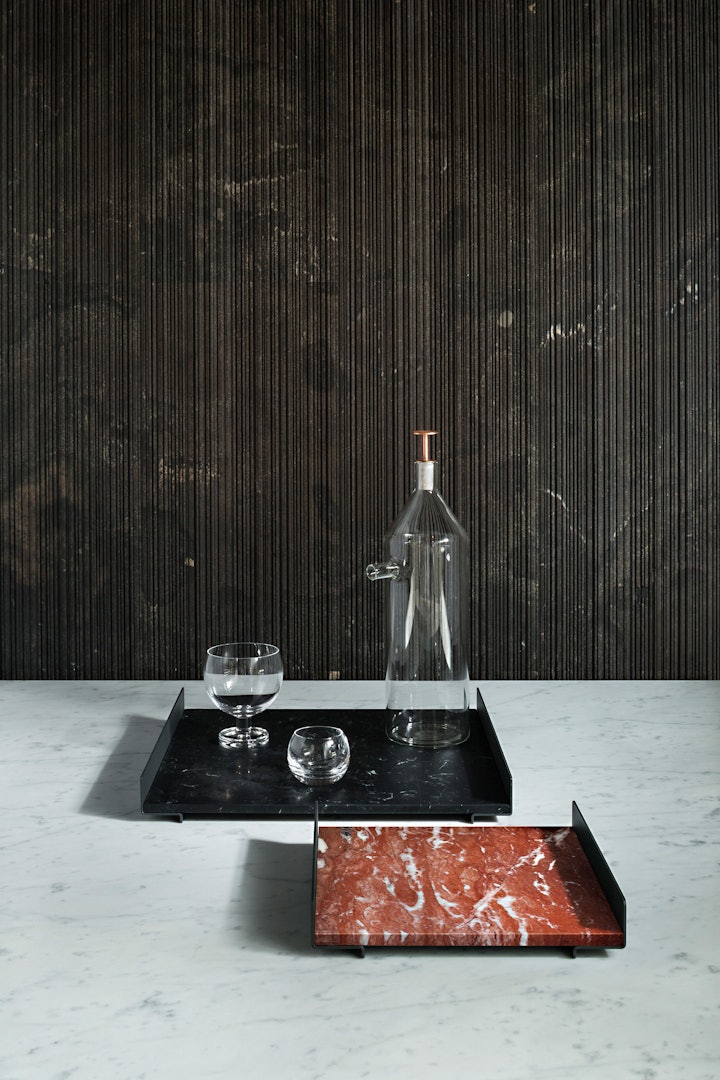
Venerated much the same way today as it was in Renaissance times, Salvatori’s interpretation of this unparalleled stone marries its rich history within the framework of the finest contemporary design. Juxtaposing the old and the new, a new kind of luxury is born.
Piero Lissoni’s newly launched Lost Stone Collection perfectly exemplifies this sentiment. Made from forgotten remnants of historic stone, the bistro tables feature cracks along the surface of the marble, which are then resealed with shimmering gold. “The Lost Stones Collection gives new life to fragments of precious stone, joining them by following the randomness of its shatter”, explains Lissoni of the project. “The golden seams along the profiles of each cut transform the imperfect form into a perfect state.” Rouge du Roi, sourced from the Languedoc region of France, was used for its vivid colour and storied history.
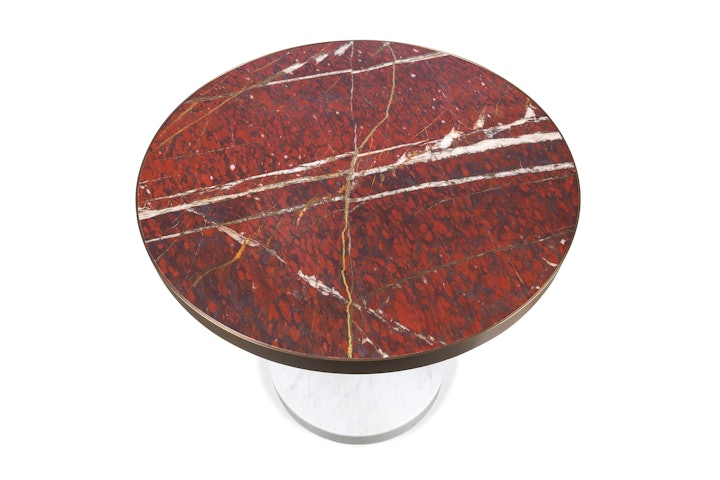
“I wanted to use regal colours which conveyed a sense of the grandiose, through the sumptuousness that is associated with marble,” explains designer Michael Anastassiades of his ‘Love Me, Love Me Not’ dining table, also sculpted from Rouge du Roi marble. “Simultaneously, I didn’t want to overwhelm the eye and so it was necessary to strike a balance between this lavishness and the functionality and of lightness of the tables.” The long, thin expanse of the elegant table is an achievement in composition, a seemingly weightless span of sumptuous stone. The cloudy white and red of the marble is the ideal statement for any type of interior, whether that be a minimal white-walled space or a richly decorated dining room.
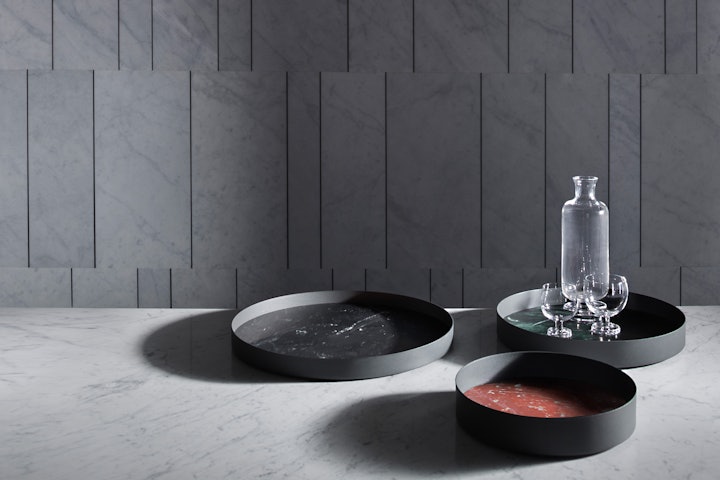
Smaller pieces, like the Pietra L series by Piero Lissoni, blend the historic profile of the ancient marble with Lissoni’s sleek design sense. Umbrella stands, door stops, trays and other items are transformed from banal, functional objects into arresting, elegant feature pieces. Made from Rosso Francia marble, also found in Southern France, the objects lend a strike of vibrant colour to any interior composition. For a softer shade, the Elisa Ossino’s ‘Omaggio a Morandi’ collection of vessels makes exceptional use of the dusty tones of the Rosso Collemandina stone, sourced from Central Italy.
When Stefano Sormano first rediscovered the quarried in the 17th century, he went on to foster an exchange between Italy and France, trading the red stone for the brilliant white Carrara marble found in Tuscany. It’s a connection that extends to this day, demonstrated by Salvatori’s masterly interpretation of the unmatched material.
